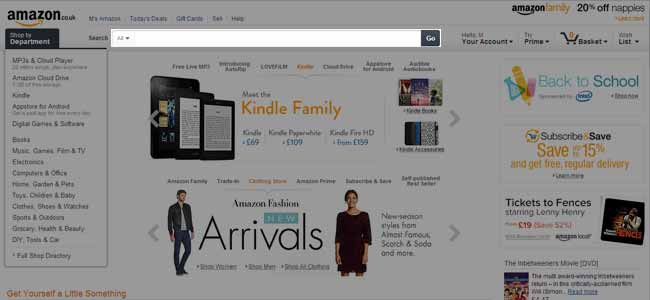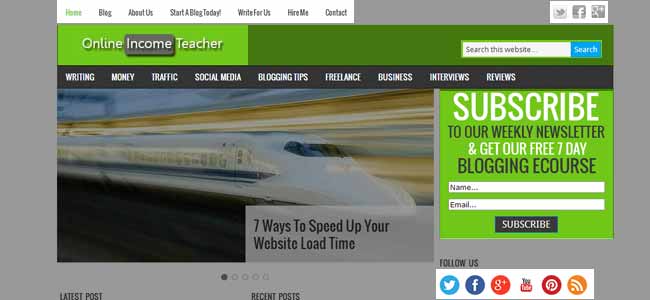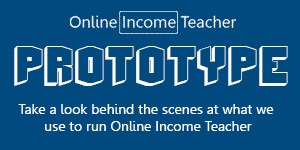This post is a bit of a spontaneous one as I have just visited a website that makes it really difficult for people to find what they are looking for. As you can imagine, I didn’t stick around for long on their site. This can be so frustrating and unfortunately a lot more common on sites than you’d think. So in this post, I am going to talk about what information you should be including on ALL your pages to help with better site navigation for your visitors.
The Importance Of Good Site Navigation
It takes a lot of work to actually get people to visit your site in the first place, so causing them to leave due to poor site navigation is just crazy!
Good websites should be easy to navigate around, no matter what page people land on. Not only does this help to improve your bounce rate, but people will likely spend more time on your site. The more time spent on your site, the better it is for business.
Let’s take a look at some important information you need to include on your site.
Branding
No matter which of your pages people first land on, they need to know what site they are on. Displaying consistent branding across your whole site can significantly help people. This isn’t just limited to showing your logo on all your pages (though of course that helps), using the same branded colours, fonts, web design, etc. all helps.
It can be confusing to your visitors if they follow a link to one of your pages that looks completely different to your original site, especially if they can’t tell if they are still on the same site or not.
Menus
The single most infuriating issue people have with websites is when they can’t find what they are looking for. Displaying a main menu (and/or submenu) on each of your pages dramatically helps people navigate round to the areas that they want.
It’s a good idea to include links to your most important pages within your menus. So your; Home, Contact, Blog, About, etc. pages should all be within easy reach. Similarly, if you run a blog, it would be good to display links to your different categories for people to follow.
Think about your most important pages on your site and make sure that people can find them.
Search Box
Obviously, you can’t add links to every page on your site. Whilst you will be displaying your most important pages, you need a way for people to easily find your other content. This is where a search box comes in.
Adding a search box to your header or sidebar is a great way for people to find what they are looking for themselves. This is great when you have a big site with lots of content, like a blog or eCommerce site. In fact, eCommerce sites should probably make their search box more prominent.
Think about Amazon. Their search box is very clear on all of their pages as that is what the vast majority of people use to find what they are looking for. If they didn’t use one, it would be near on impossible for customers to find anything.
So, make sure you have a search box on your site and try to position it where people can easily see it.
Social Media Links
This is something that a LOT of sites fail to display. Websites and social media go hand-in-hand now, so you need to make sure that people can easily find your social links on your site.
Getting traffic to your site is only half the problem; you need to encourage those people who have found you to come back to your site. If people like your content, they may want to follow you on Twitter or Like your Facebook page. This is great as then you can encourage people to come back by tweeting your latest content or sharing it on Facebook.
Don’t mistake this with social sharing buttons (tweet, like, +1, etc.). They are essential on your blog posts and product pages, but they aren’t necessarily needed on all your pages. Direct links to your social media profiles are different and ARE needed on all your pages.
People can only follow/like you if they can find your links, so make sure that you display them clearly.
Email Opt-In Box
We have talked a lot about the importance of building an email list and to do this you need to get people to subscribe. You can’t hope of getting lots of people to subscribe if you only have one email opt-in box on your whole site. You need to be displaying it on ALL of your pages (in some cases displaying it in more than one place is beneficial).
It’s a good idea to display a subscribe opt-in box at the top of your pages where everyone will see them when they first land on your page. That way, if they want to sign-up they don’t have the excuse of not being able to find it.
You can also display an opt-in box at the end of your posts and/or setup a lightbox. That way, there is no reason for people not to be able to signup.
Copyright Info
Lastly, you need to display your copyright information, as well as links to your disclaimer/legal documents on all your pages. This isn’t really info that people need to see, but is important that is visible should they want it. Therefore, you can simply add it within your footer.
The 1 Exception To The Rule – Landing Pages!
Whilst all of the above information should be displayed across your site, there is one special exception to the rule, and that is landing pages.
Landing pages are special in that they only have one dedicated purpose. You may have a landing page to help sell your product, one for email subscribers or one for a ‘Thank You’ page. Whatever the reason, you don’t really want to distract people with lots of other information.
Landing pages work as they help to focus the reader on what you want them to do (i.e. buy your product). On these select pages, you don’t really need social media links, or subscribe boxes as you would rather they buy your product.
Even then though, consistent branding, copyright information and at least one visible link back to your main site is necessary just to help them.
Summary
Whether you are just starting out with your first website or already have one up and running, take a look and assess what information you are displaying across your site. Think about how easy it is for people to navigate round your website (just because you know how, doesn’t mean everyone does). The easier you make it for people, the better your website will be to use.
What important information do you display that isn’t already mentioned above? What information irritates you when sites fail to display it clearly? Please let us know your views in the comments section below!
Image by ‘NineOneSix’ [Source]




CommentLuv vs Disqus – Why I Don’t Use CommentLuv!